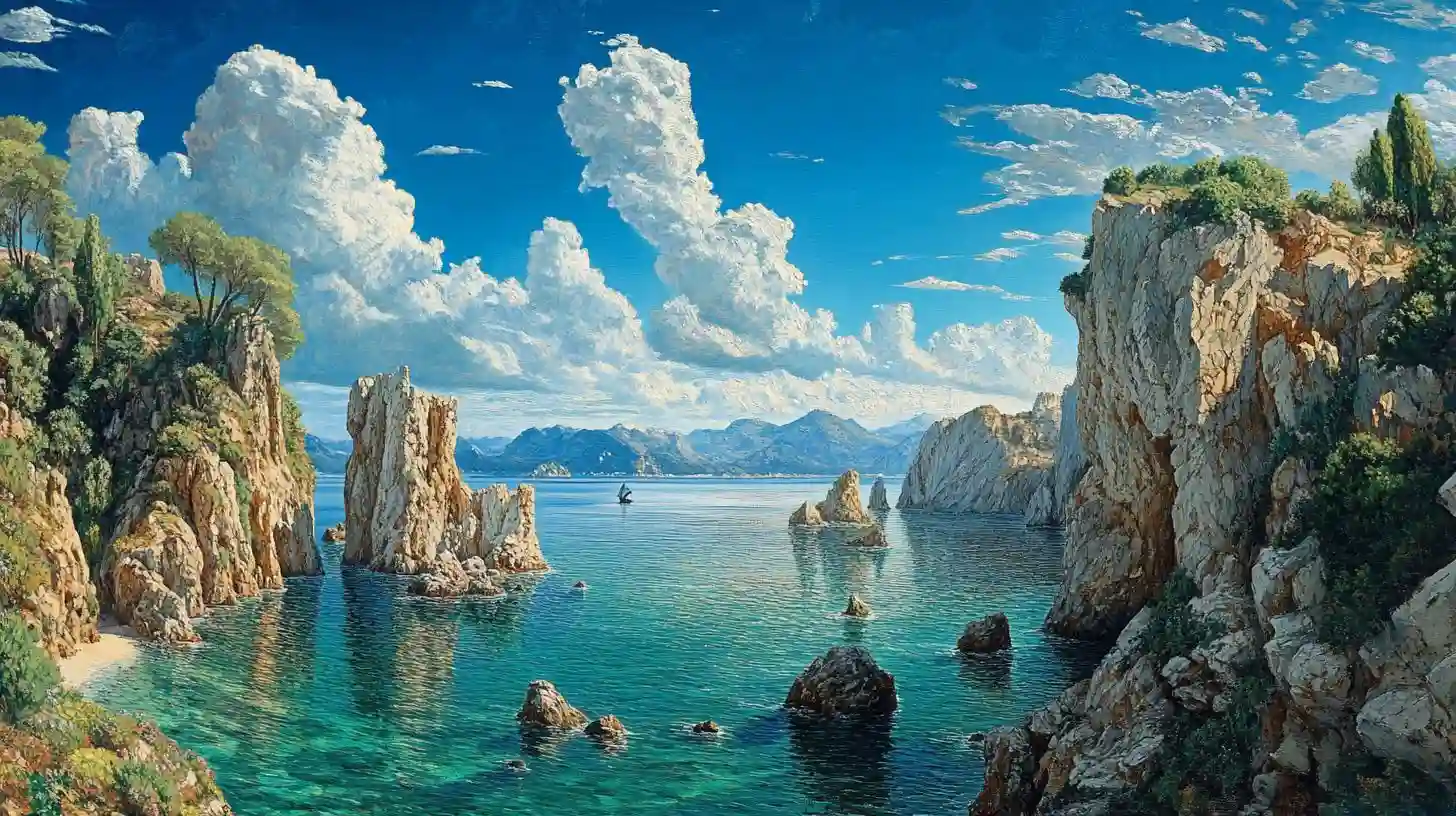
Art has the unique ability to transport viewers to different places, evoking emotions and igniting the imagination. Landscape paintings, in particular, have a profound ability to capture the world’s natural beauty, allowing us to experience scenes that we may never visit in person. From lush forests to towering mountains, artists across centuries and cultures have portrayed the grandeur of the outdoors, making these works beloved treasures in galleries and museums all over the globe.
One of the most iconic landscape paintings is Vincent van Gogh's "Starry Night." This masterpiece, painted in swirling and vibrant colors, features a dreamy night sky filled with stars above a tranquil village. Van Gogh's unique use of brushstrokes gives the piece an emotional depth that resonates with viewers. The cypress tree, reaching up toward the sky, serves as a bridge between the earthly and the celestial, reflecting Van Gogh’s turbulent emotions while providing a sense of connection to the universe. It is a visual feast that prompts contemplation about the vastness of existence and our place within it.
Another celebrated piece is Claude Monet’s "Water Lilies," a series of paintings that showcases the beauty of his flower garden in Giverny. Monet’s technique of capturing light and color in these scenes invites viewers into a serene landscape filled with soft reflections on water. The impressionistic style allows for a subtle interaction with nature; viewers are drawn into the tranquility of the setting as they experience the movement of light across the water’s surface. Monet’s ability to depict the fleeting effects of light and atmosphere is what makes these pieces timeless.
Turner’s "The Fighting Temeraire," not only captures a historic scene but also embodies the transition between the past and the modern world. The painting depicts a once-mighty warship being tugged to its final resting place against a magnificent sunset. Turner's use of color and light creates a dramatic atmosphere, highlighting the indifference of nature to human endeavors. The juxtaposition of the old ship with the rising industrial age serves as a poignant reminder of the passage of time and the relentless march of progress. The emotional pull of the piece touches upon nostalgia, evoking a sense of loss as well as appreciation for the beauty that surrounds us.
Caspar David Friedrich’s "Wanderer Above the Sea of Fog" presents another compelling landscape through its depiction of solitude and reflection. The painting shows a lone figure standing atop a rocky outcrop with a vast, foggy landscape sprawled beneath. It speaks to the Romantic ideals of introspection and the sublime nature of the unknown. The figure’s elevated position suggests both physical and philosophical exploration, inviting introspection about humanity’s place in nature. The ethereal quality of the fog enhances the enchanting mystery of the scene, encouraging viewers to ponder their connection to the natural world.
Alfred Sisley, a leading figure in the Impressionist movement, beautifully rendered the changing seasons and the ever-evolving landscapes of the countryside. His work "The Bridge at Villeneuve-la-Garenne" exemplifies the charm of rural life through its portrayal of a simple yet picturesque scene. The warm light reflects off the water, surrounded by lush greenery and blooming flowers, inviting viewers to revel in the beauty of nature during spring. Sisley mastered the depiction of atmospheric effects, allowing the viewer to feel the gentle breeze and hear the soft rustle of leaves. His commitment to capturing the serenity and vibrancy of everyday life serves as a reminder of the understated beauty found in our surroundings.
The modern era has brought forth its own interpretations of the landscape genre. Artists like Ansel Adams utilized photography to capture breathtaking vistas of the American wilderness. His black-and-white images of the Yosemite Valley and the grandeur of the Sierra Nevada mountains evoke a sense of awe and respect for the natural world. Adams’ attention to detail and mastery of light and shadow create dramatic compositions that celebrate the inherent beauty of the earth. His work has not only inspired countless photographers but has also played a significant role in environmental conservation efforts, reflecting the power of art to bring awareness to pressing issues.
As art enthusiasts explore these world-famous landscape paintings, they embark on a visual journey that invites them to witness different perspectives of nature and the human experience. Each artist, through their unique style and interpretation, has immortalized moments of beauty that resonate through time. Landscape paintings connect us profoundly to the world around us, reminding us of the importance of nature, nostalgia, and the emotional landscape that resides within us all. The rich tapestry of colors, forms, and textures invites viewers to immerse themselves in the harmonious dance between humanity and the natural environment. The legacy of these extraordinary works continues to inspire admiration, curiosity, and reverence, rewarding those who take the time to appreciate their intricate details.